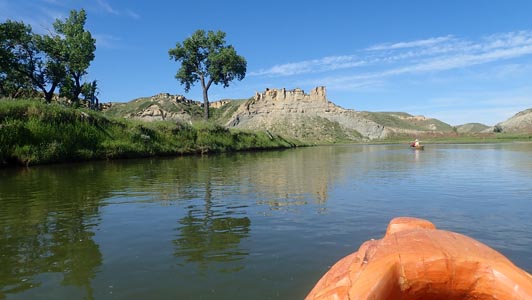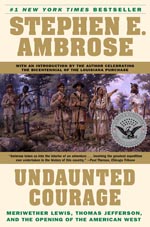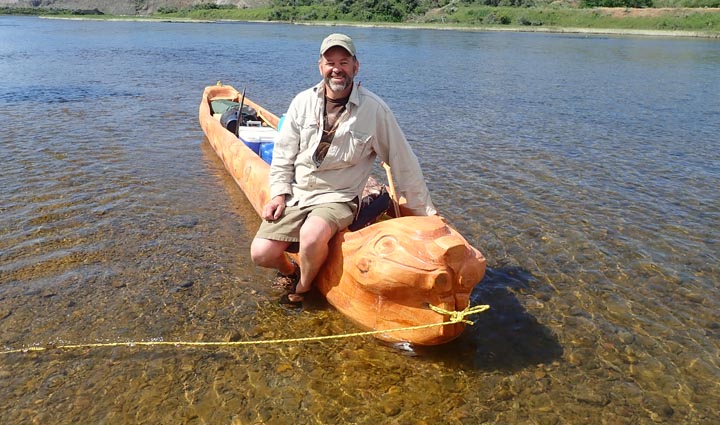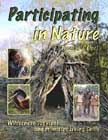| Thomas J. Elpel's Web World Portal  Thomas J. Elpel PO Box 697 Pony, MT 59747 |





Thomas J. Elpel |
|
Tom Elpel Presents...
Missouri River Corps of Rediscovery 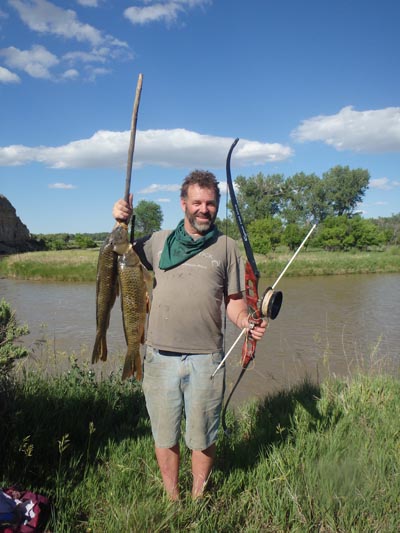
Want to join the adventure of a lifetime? Spend five months with Thomas J. Elpel retracing the Missouri River portion of the Lewis and Clark National Historic Trail from Three Forks, Montana to St. Louis, Missouri, approximately 2,300 river miles. 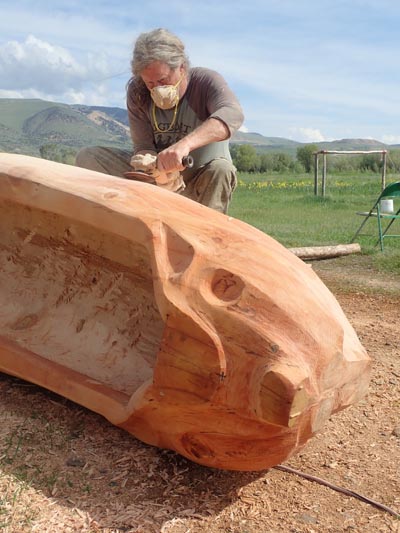 Lewis and Clark ascended the river mapping its watercourse, naming rivers and mountains, documenting the flora and fauna, living off the land, and making connections with indigenous peoples. In our journey of rediscovery, we will descend the river, botanizing, foraging, hunting, and fishing along the way. We may also coordinate with folks on the outside to bring in fresh roadkill game to supply fresh meat and hides to the expedition. We will share skills and knowledge with each other to effectively create a six-month wilderness skills immersion experience, and we may share our skills with people in communities along the way.
Lewis and Clark ascended the river mapping its watercourse, naming rivers and mountains, documenting the flora and fauna, living off the land, and making connections with indigenous peoples. In our journey of rediscovery, we will descend the river, botanizing, foraging, hunting, and fishing along the way. We may also coordinate with folks on the outside to bring in fresh roadkill game to supply fresh meat and hides to the expedition. We will share skills and knowledge with each other to effectively create a six-month wilderness skills immersion experience, and we may share our skills with people in communities along the way. Tom will be paddling Belladonna Beaver, the dugout canoe he carved with Churchill Clark, the great-great-great-great grandson of Captain Clark. Other participants are welcome to bring modern canoes or borrow an extra canoe from Tom. Tom has a heavy-duty trailer for the dugout canoe and will seek to have it shuttled from dam to dam to facilitate portaging all canoes and gear around each dam with the aid of local river angels and Lewis and Clark enthusiasts. Tom will rent a truck in St. Louis to tow the trailer and canoes back to Montana. Fundraising for the Jefferson River Canoe Trail 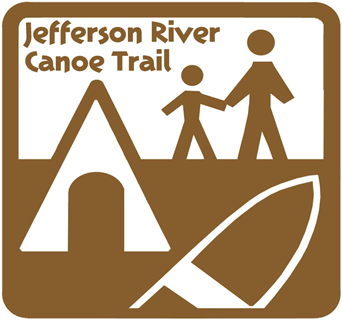 At heart, the Missouri River Expedition is a primitive skills and nature-awareness oriented canoe trip. However, it will partly be a media-centric adventure with an emphasis on fundraising to purchase a new campsite on the Jefferson River Canoe Trail. Tom Elpel is president of the Jefferson River Chapter of the Lewis & Clark Trail Heritage Foundation (LCTHF). The Chapter has been working to establish a network of public campsites along the entire length of the Jefferson River.
At heart, the Missouri River Expedition is a primitive skills and nature-awareness oriented canoe trip. However, it will partly be a media-centric adventure with an emphasis on fundraising to purchase a new campsite on the Jefferson River Canoe Trail. Tom Elpel is president of the Jefferson River Chapter of the Lewis & Clark Trail Heritage Foundation (LCTHF). The Chapter has been working to establish a network of public campsites along the entire length of the Jefferson River.The Missouri River begins where the Jefferson, Madison, and Gallatin rivers join together near Tom's home in southwest Montana. Lewis and Clark named the Jefferson River in honor of President Thomas Jefferson, who envisioned and initiated their expedition. Tom intends to write a series of articles or a regular column about the expedition to raise funds for campsite acquisition and to stimulate membership in LCTHF. In addition, local media will be invited out for interviews as we pass through towns big and small. No, the media won't be in our faces every day, but hopefully we can get some good publicity for the fundraiser when we stop at towns along the way. 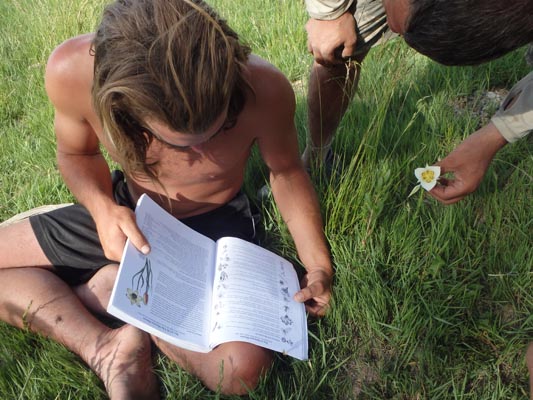 Invitation to Join the Permanent Party
Invitation to Join the Permanent PartyTom would like to invite participants to join the six-month journey to St. Louis. Priority invitation goes to Green University, LLC alumni. Anyone who joins us for a semester or yearlong program is part of the G.U. family for life. This invitation extends to all past or present immersion students and interns. In addition, Tom would like to invite other individuals from the primitive skills / nature awareness community who have knowledge and experience to share with the tribe, such as tracking, bird language, fishing, hunting, and crafting skills. Tom wishes to assemble an expedition of talented individuals who can spend six months learning from each other. Please contact Tom to ask for a formal application. Tell us about yourself, what you have to offer, and what you hope to gain from the experience. There is no cost to join the expedition, although each person must be prepared to pay for groceries and other expenses along the way. Meet our expedition members here. Group members will take turns cooking meals for everyone. In addition to the permanent party, individuals may follow us on Facebook and join us for a day, a week, or more anywhere along the river. 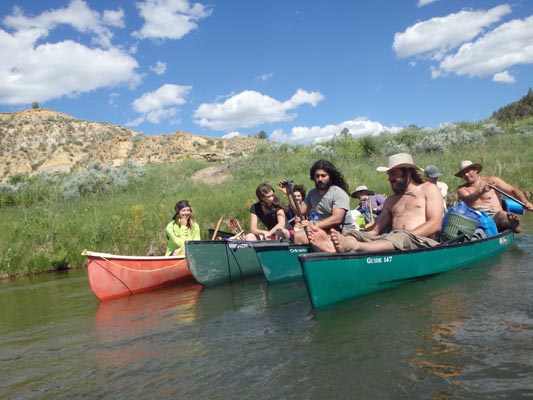 Paddling Logistics
Paddling LogisticsLewis and Clark paddled, poled, and cordelled their way up the Missouri River in 1804 and 1805, returning back downstream in 1806. Today there are fifteen dams on the Missouri River and many other significant changes to the watercourse and surroundings. Although dams extend all the way through Montana, the river can be loosely divided into three main sections: the Upper Missouri, the Dakota dams, and the lower river. The Missouri River through Montana is said to be the most scenic and interesting part of the journey, consisting of 500 river miles plus 200 flat-water miles on reservoirs. Here we will take the most time to camp and fully experience the landscape. Due to afternoon wind and waves on expansive reservoirs, we will test the feasibility of night paddling with lights to cover some distance while the water is calm. We will also bring a handheld sail for the dugout canoe, and all participants are encouraged to bring or improvise sails to harness the wind as needed on open lakes. 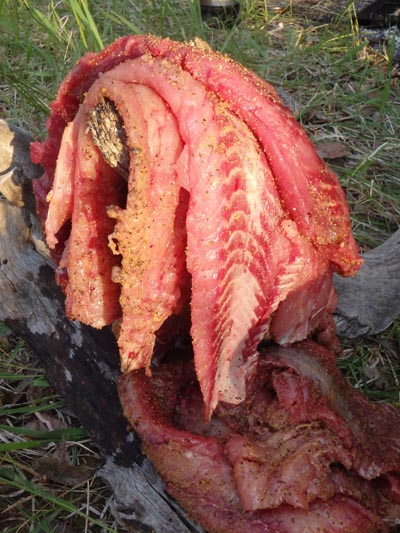 Most of the Missouri River through North and South Dakota consists of flat-water reservoirs behind dams. These are large, open reservoirs surrounded by grasslands with few trees for shelter from sun or rain or wind. We will accelerate this portion of the journey, minimizing time in the Dakotas, with the exception that we may reach out to local tribes to share skills and stories.
Most of the Missouri River through North and South Dakota consists of flat-water reservoirs behind dams. These are large, open reservoirs surrounded by grasslands with few trees for shelter from sun or rain or wind. We will accelerate this portion of the journey, minimizing time in the Dakotas, with the exception that we may reach out to local tribes to share skills and stories. The lower river flows between Nebraska and Iowa, then Kansas and Missouri, ultimately bisecting Missouri to flow to St. Louis. Much of the lower river has been dredged and channeled to facilitate shipping, greatly changing its character since the time of Lewis and Clark, yet the riverbanks are largely lush and green and may offer great opportunities for botanizing and fall foraging along the way. 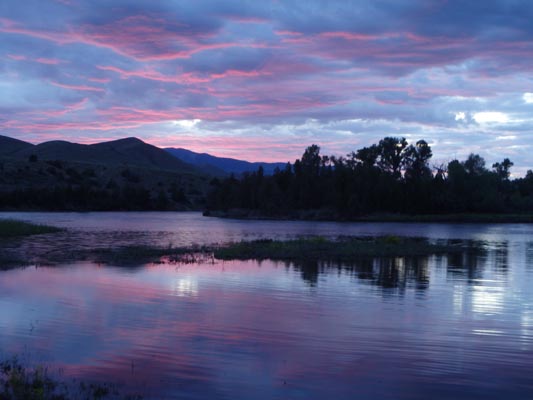 Rules and Culture
Rules and CultureLewis and Clark flogged some of their men for drunkenness prior to the official launch of the expedition. Although there won't be any flogging on this trip, neither will there be drugs, alcohol, or tobacco. The journey is an opportunity to seek a deeper connection with nature, not an escape from reality. Anyone who cannot respect Green University LLC's tribal culture will be asked to leave. Naturally we can expect some friction from living together as a group for an extended period of time. Expedition members may need to separate themselves occasionally for sanity, paddling farther away from the pack and setting up camp farther away from the main kitchen as needed. We will also hold periodic councils to pass the talking stick and work through issues. However, the most significant factor in getting along is to enlist adaptable, easy-going personalities who can roll with the times. If you are a person who is frequently in conflict with other people then please do not apply to join the expedition. Thanks for your consideration. 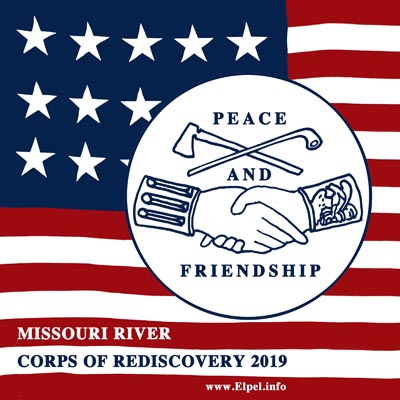 Expedition Logo
Expedition LogoThe United States consisted of fifteen states during the Lewis and Clark Expedition of 1804-1806, as represented by fifteen stars and fifteen stripes on the flag. The Jefferson Peace Medal was minted and gifted to tribes encountered along the route from St. Louis to the Pacific Ocean and back. These elements are incorporated in the new expedition logo shown here, which may be printed on bandanas later. Please "Like" the official Missouri River Corps of Rediscovery page on Facebook for updates before and during the expedition.
Interested in joining an adventure with Thomas J. Elpel? Videos about our dugout canoe, Belladonna Beaver
|
|
Looking for life-changing resources? Check out these books by Thomas J. Elpel:
|
|
|
